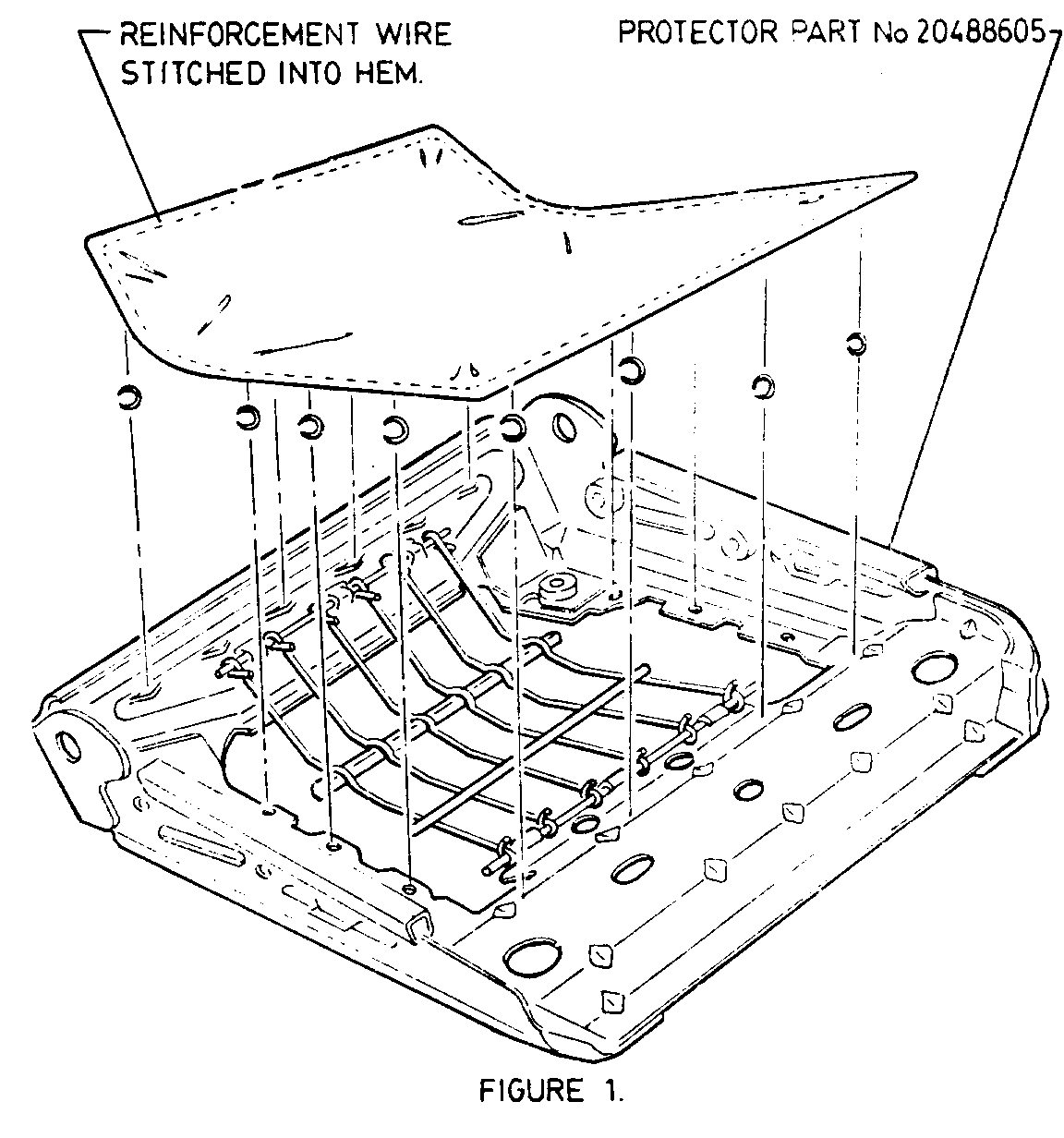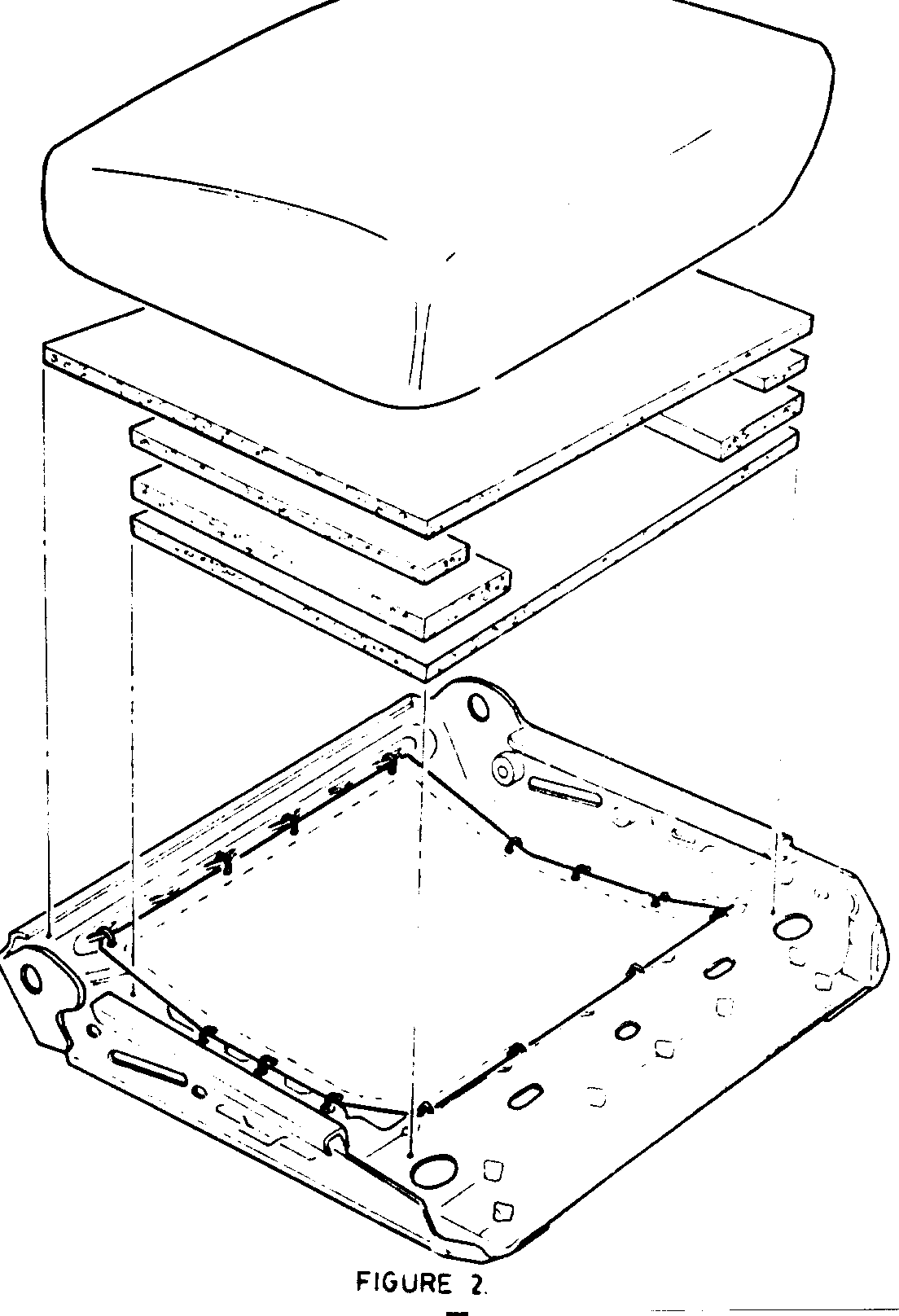WRINKLED BUCKET SEAT TRIM REPAIR PROCEDURES

VEHICLES AFFECTED: 1983/84 'B' & 'G' Models With Heavy Duty Seats
Bucket seats that exhibit wrinkled trim or that do not satisfactorily support the occupant may have collapsed foam pads. This condition may occur if the vehicle is subject to round the clock operation which does not permit the foam pad to recover.
If this type of comment is encountered, the following rework, of the seat cushion, can be used to correct this condition.
REWORK PROCEDURE
1. Remove the seat assembly from the seat track and place it on the work bench.
2. Disassemble the seat bottom from the seat back.
3. Remove the hog rings securing the cushion cover to the seat frame and remove it.
4. Inspect the cushion cover for damage. Sew in new material if required.
5. Remove the seat cushion from the frame. Fig. 1
6. Check the part number on the bottom of the cushion. It should be No. 20417676. If it is not, replace the cushion with this number.
7. Inspect the cushion for damage. If it has been torn or cut, cement it back together with 3M Trim Adhesive No. 08021 or equivalent.
8. Make up a hammock 14 inches x 14 inches consisting of 3 layers of Herculite 100% nylon or equivalent material. Sew in reinforcement wires at the left and right sides and hog ring the hammock to the lower frame side support. Fig. 1
9. Install a plastic side protector part no. 20488605 or equivalent material, over each edge of the upper frame side support as shown. Fig. 1
10. Place four layers of 3/4 inch poly foam onto the hammock as per the following instructions and Fig. 2.
(a) 1 sheet 17 inches x 12 inches over the nylon hammock
(b) 2 sheets 12 inches x 4 inches - 1 sheet on each side.
(c) 2 sheets 12 inches x 2 inches - 1 sheet on each side.
(d) 1 sheet 17 inches x 16 inches.
Compress all the foam in under the edge of the frame side protector.
11. Place the seat cushion in position over the rework material and fit it to the frame. Fig. 2
12. Place the seat cushion trim material in position and refit it to the frame. Hog ring it in position.
13. Reassemble the seat and install in the vehicle.


General Motors bulletins are intended for use by professional technicians, not a "do-it-yourselfer". They are written to inform those technicians of conditions that may occur on some vehicles, or to provide information that could assist in the proper service of a vehicle. Properly trained technicians have the equipment, tools, safety instructions and know-how to do a job properly and safely. If a condition is described, do not assume that the bulletin applies to your vehicle, or that your vehicle will have that condition. See a General Motors dealer servicing your brand of General Motors vehicle for information on whether your vehicle may benefit from the information.
